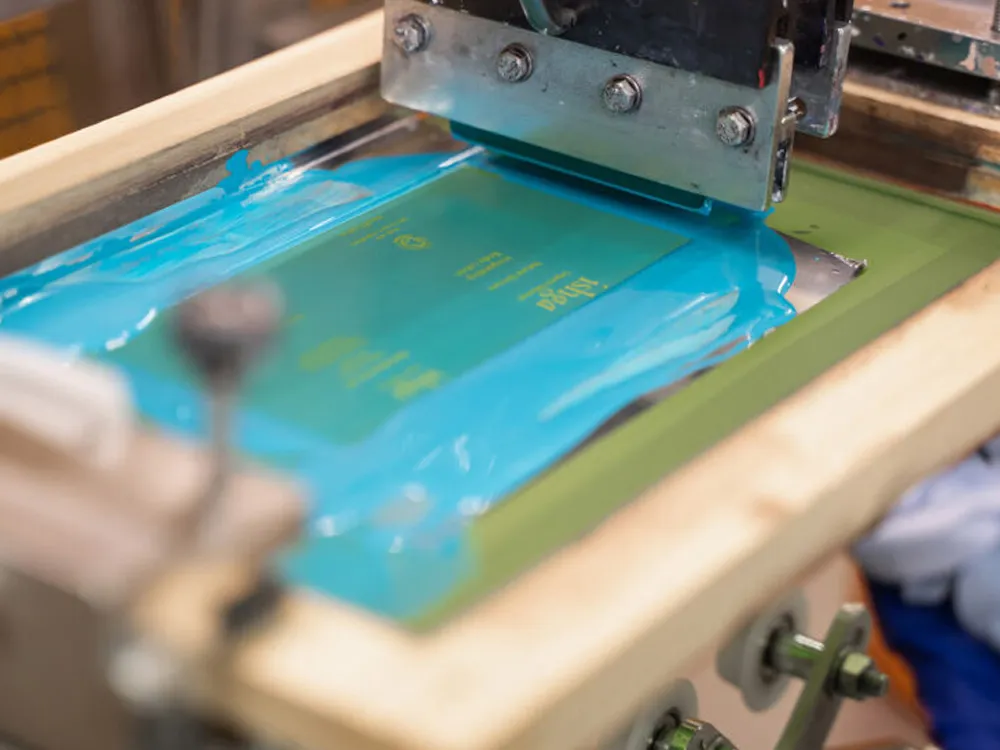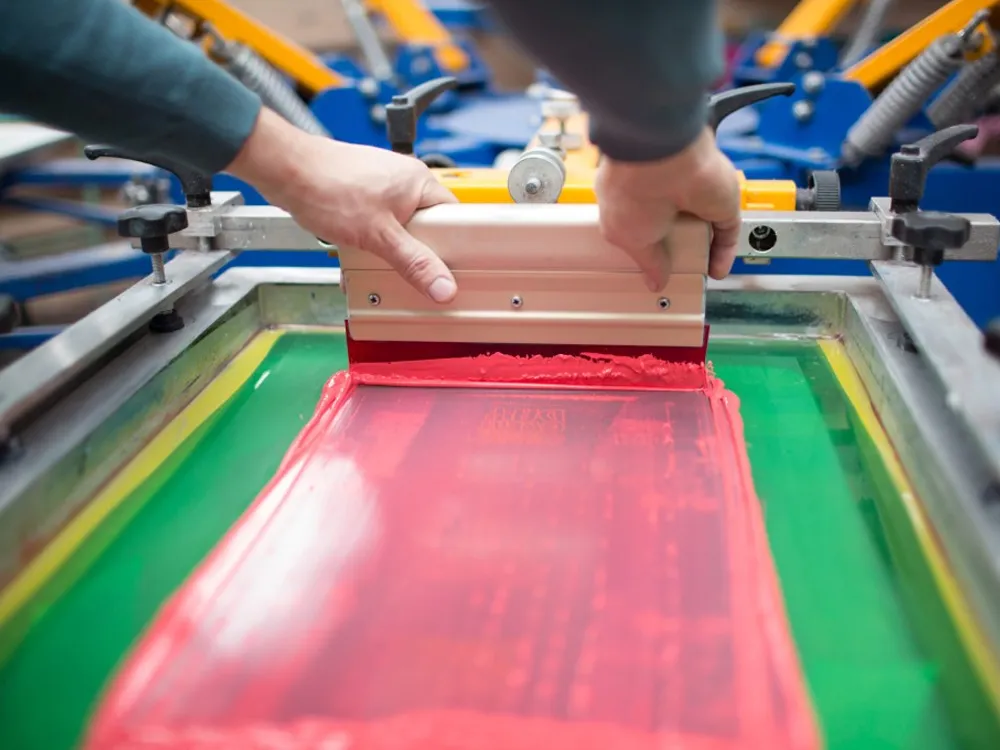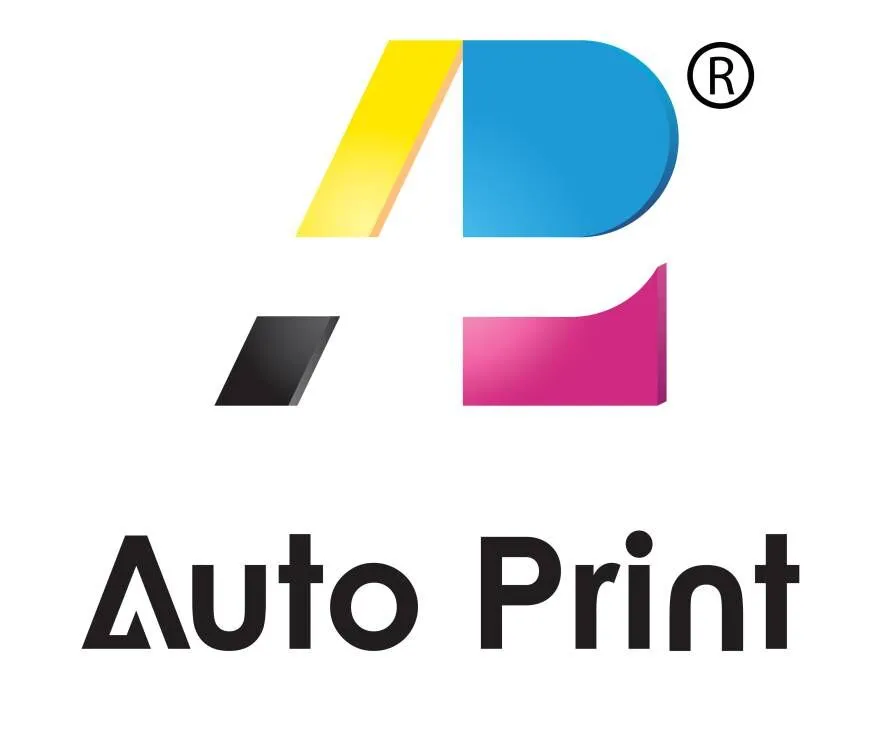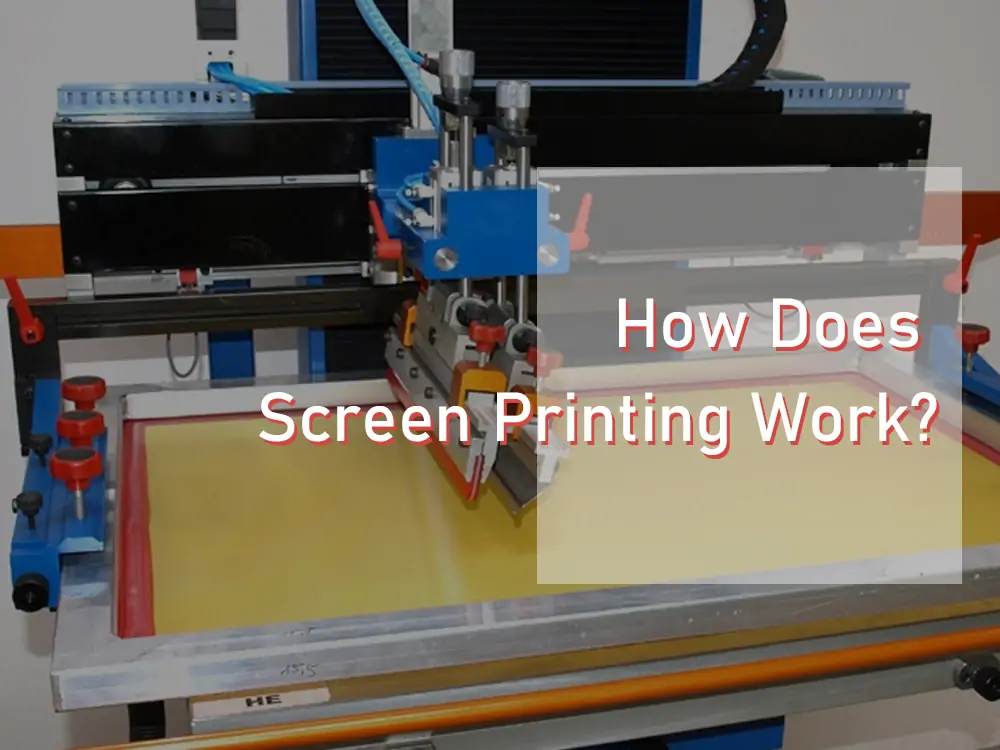Screen printing is the process of transferring stenciled artwork onto a surface. Also known as silk screening, the screen printing process involves a mesh screen, ink, and a rubber blade known as a squeegee.
The process involves creating artwork stencils on a mesh screen. And then push the ink with the squeegee to imprint the design on the surface below. The most common materials printed with screen printing are fabric and paper. But silk screening can also print plastic, metaling, and wooden surfaces.
How Does Screen Printing Work?
Although the basic process is the same, screen printing can be done by hand or machine. The main differences are in the ink used and the surface that receives the design. Below is a step-by-step process of screen printing.
Preparing the Design/ Artwork
The first step in silkscreen printing is preparing the artwork you intend to print. Before you start with the artwork, it is essential to consider the purpose of your print and the target audience. If you’re doing it for a client, it means listening to the client’s needs before you design the image.
Once you have designed the artwork and the client approves it, you print it on a transparent acetate film. The acetate film is what you use to create the stencil or screen.
Gather Everything You Need
Once you are done with the design and have printed it on the transparent acetate film, it’s time to get everything else needed to complete the project.
- The first thing to bring on board is the material you intend to print. Screen printing can be done on paper, fabric, metal, or wood. Plastic materials can also be printed using screen printing. The object should be well-cleaned and able to absorb the ink.
- The next material needed is the screen frame. It is usually made of wood and tightly covered with a mesh material. This is the screen you will use to transfer your design onto the object you are printing on.
- Next, you need a black surface. It should be large enough to hold the screen frame. This black material can be made of paper, plastic, or fabric. This is where you place the screen to burn the design onto it.
- You will also need a photosensitive emulsion and activator. These two come separately, but you must mix them before use. You must ensure you have mixed enough to cover the screen adequately.
- The next material is screen printing ink. Depending on the type o screen printing you are using, you can buy several shades of colors to make your final art impressive.
- The final material is the squeegee. This is a crucial tool in screen printing. It is used to spread the ink throughout the screen to transfer it evenly onto the object. A squeegee can be in different sizes and made from wood or vinyl.
Preparing the Screen
Once you have all the items, the next step in the silk screening process is to choose and prepare the screen. Choosing means deciding the screen and mesh count on your screen. You can either use a higher mesh count, which is used to print finer detail. The lower mesh count lets the ink flow because of the large openings on the screen.
The total number of fibers in a square inch is what is referred to as mesh count.
Once you have decided on the screen and mesh count to use, it is time to coat it with a layer of light-reactive emulsion.
Types of Emulsions
- The first type of emulsion is Diazo. It is the cheapest, but it requires longer exposure time and does not work well with fine-detailed prints.
- The second type is the SBQ-based emulsion. It is expensive, but it cures rather quickly. It doesn’t require mixing and is suitable for fine-detailed prints.
- The third type of emulsion is called Dual-cure emulsion. This is a combination of Diazo and SBQ-based emulsion. It requires mixing, requires less time to cure than Diazo, and its price lies between Diazo and the SBQ-based.
Exposing the Design for Printing
The next step in the silk screening process is exposing the emulsion. In this step, the transparent acetate film is carefully placed on the mesh screen that is already emulsion-covered. This process is done under bright light that hardens the emulsion.
Important to note is that multiple-color prints require the printer to create a screen for each color.
Creating the Stencil
In this step, any emulsion left unhardened will be washed away to leave a clear imprint on the screen. The next step is to dry the screen and perform any final touch-ups required. The stencil is ready for use.
Preparing for the Printing Process
In this step, the material you intend to print is placed flat on the printing board below the screen. The printing can be done in two press styles; manual or automatic. While both styles do an excellent job, modern printing presses prefer automatic as it makes the process faster.
Transferring the Design to the Desired Surface
After the item you intend to print is set with the screen above it, you can lower the screen down onto the printing board. And then add ink on top of it and use the squeegee to spread it. This process transfers the ink through the open spaces of the stencil onto the material underneath.
If you are printing several items with the same design, you raise the screen. And then you should remove the already printed material, replace it with a new one, and repeat the process.
Once all the items have been printed, you can use a special washing fluid to remove the emulsion from the screen and keep the mesh for future reusing.
Heat Curing
The curing process is the finishing part of the silkscreen printing process. Different ink manufacturers recommend different ways of heat curing. While some recommend passing the printed material through a pre-heated oven above 400 degrees Fahrenheit for 30 seconds, others recommend ironing the fabric.
The curing process ensures the imprinted design does not fade away.

Types of Screen Printing
Different screen printing techniques will bring different results. It is essential to understand the six types of silk screening processes.
Spot Color
Spot color is the most common type of screen printing. It uses the stock color of the ink to produce a vibrant solid spot of color. The thickness of the print depends on the mesh count and type of ink used.
Greyscale
Greyscale is the screen printing technique that prints full-color images as one-color grayscale or halftone colors. The final print will appear more detailed if your halftone contains more dots. Although many confuse it with black and white, it is not. Instead, it prints all the colors available on your design, only in shades of grey.
Halftone
Halftone screen printing uses a single, halftoned color to create the effect of a multiple-colored print. It is relatively cost-effective as it uses only one color.
Duotone
This screen printing technique combines two halftones to print the same image with two colors. The first halftone is printed with black ink, and the second with colored ink. It delivers a sophisticated effect on the final print.
CMYK
Also known as four-color printing, CMYK screen printing is the most complex technique in screen printing. The final print features the four primary colors (cyan, magenta, yellow and black)
The four colors are combined to produce the original design. Manual screen printing still has excellent results with CMYK screen printing. But automatic printing is preferred for a superior product.
Simulated
The simulated screen printing technique combines CMYK and spot color printing. It combines spot colors with halftone colors to deliver the final product. In this technique, the printer uses the spot color to intensify the overall appearance of the printed design.
It is probably the most expensive screen printing technique as it involves complex designs and many screens.

Why Choose Screen Printing?
- Screen printing is versatile. It can be used on many materials, including fabric, plastic, wood, glass, and metallic surfaces.
- Screen printing also offers an excellent finish. Screen printed materials have vibrant colors compared to other types of printing, such as sublimation and heat press.
- Another great advantage of screen printing, especially to printing shop owners, is that it is bulk-order friendly. With screen printing, you can take large orders and deliver a well-done job quickly.
- Silk screening is also preferred for its cost-effectiveness. This is an advantage to both printing shop owners and clients.
- Screen printing is a swift process. A screen printing expert can deliver several bulk orders of screen-printed fabrics in a day.
- Another reason to choose screen printing is that its products are durable and long-lasting. If you choose a professional screen printing shop for your project, you can have quality products that never fade away.
Final Word
Screen printing is an ancient technique that will not die off the market soon. It involves skill and expertise more than theory. Do you own a screen printing shop and want to turn it into your cash cow? Specialize in all six types of screen printing. Make yourself a one-stop shop for all screen printing solutions.

